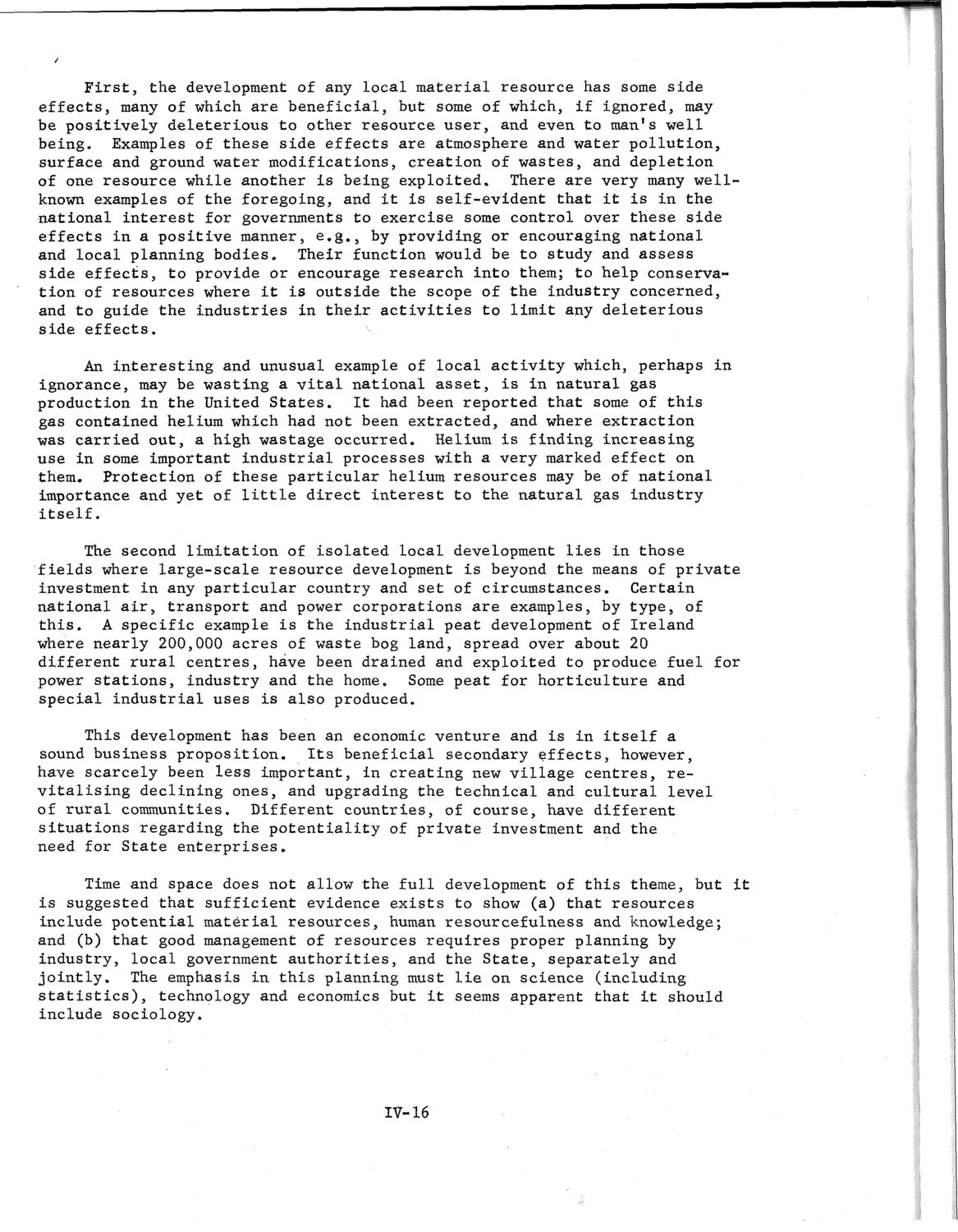| |
| |
Caption: SWE - Proceedings of the First International Conference of Women Engineers and Scientists
This is a reduced-resolution page image for fast online browsing.

EXTRACTED TEXT FROM PAGE:
First, the development of any local material resource has some side effects, many of which are beneficial, but some of which, if ignored, may be positively deleterious to other resource user, and even to man's well being. Examples of these side effects are atmosphere and water pollution, surface and ground water modifications, creation of wastes, and depletion of one resource while another is being exploited. There are very many wellknown examples of the foregoing, and it is self-evident that it is in the national interest for governments to exercise some control over these side effects in a positive manner, e.g., by providing or encouraging national and local planning bodies. Their function would be to study and assess side effects, to provide or encourage research into them; to help conservation of resources where it is outside the scope of the industry concerned, and to guide the industries in their activities to limit any deleterious side effects. An interesting and unusual example of local activity which, perhaps in ignorance, may be wasting a vital national asset, is in natural gas production in the United States. It had been reported that some of this gas contained helium which had not been extracted, and where extraction was carried out, a high wastage occurred. Helium is finding increasing use in some important industrial processes with a very marked effect on them. Protection of these particular helium resources may be of national importance and yet of little direct interest to the natural gas industry itself. The second limitation of isolated local development lies in those fields where large-scale resource development is beyond the means of private investment in any particular country and set of circumstances. Certain national air, transport and power corporations are examples, by type, of this. A specific example is the industrial peat development of Ireland where nearly 200,000 acres of waste bog land, spread over about 20 different rural centres, have been drained and exploited to produce fuel for power stations, industry and the home. Some peat for horticulture and special industrial uses is also produced. This development has been an economic venture and is in itself a sound business proposition. Its beneficial secondary effects, however, have scarcely been less important, in creating new village centres, revitalising declining ones, and upgrading the technical and cultural level of rural communities. Different countries, of course, have different situations regarding the potentiality of private investment and the need for State enterprises. Time and space does not allow the full development of this theme, but it is suggested that sufficient evidence exists to show (a) that resources include potential material resources, human resourcefulness and knowledge; and (b) that good management of resources requires proper planning by industry, local government authorities, and the State, separately and jointly. The emphasis in this planning must lie on science (including statistics), technology and economics but it seems apparent that it should include sociology. IV-16
| |